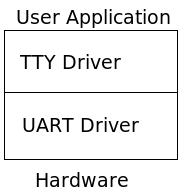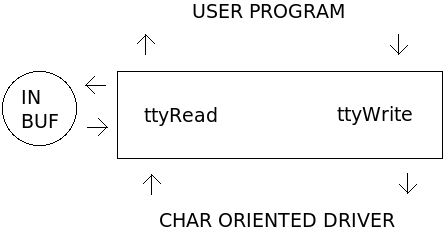Difference between revisions of "TTY Driver"
Jump to navigation
Jump to search
m |
|||
| Line 4: | Line 4: | ||
[[Image:TtyDriver.png]] | [[Image:TtyDriver.png]] | ||
| + | == Functionality == | ||
| + | === Initialize === | ||
''This section needs updating'' | ''This section needs updating'' | ||
| − | + | === Open === | |
| − | == Control == | + | ''This section needs updating'' |
| + | === Close === | ||
| + | ''This section needs updating'' | ||
| + | === Read === | ||
| + | ''This section needs updating'' | ||
| + | === Write === | ||
| + | ''This section needs updating'' | ||
| + | === Control === | ||
''This section needs updating'' | ''This section needs updating'' | ||
Revision as of 16:57, 20 June 2007
The TTY driver is built on top of the UART driver (or other TTY appropriate hardware). The driver is responsible for sending and receiving character input between a user program level, such as the XINU Shell, and a char-oriented hardware driver. Line buffering and cooking are the two primary responsibilities for the new TTY driver.
Contents
Conceptual structure
Functionality
Initialize
This section needs updating
Open
This section needs updating
Close
This section needs updating
Read
This section needs updating
Write
This section needs updating
Control
This section needs updating

